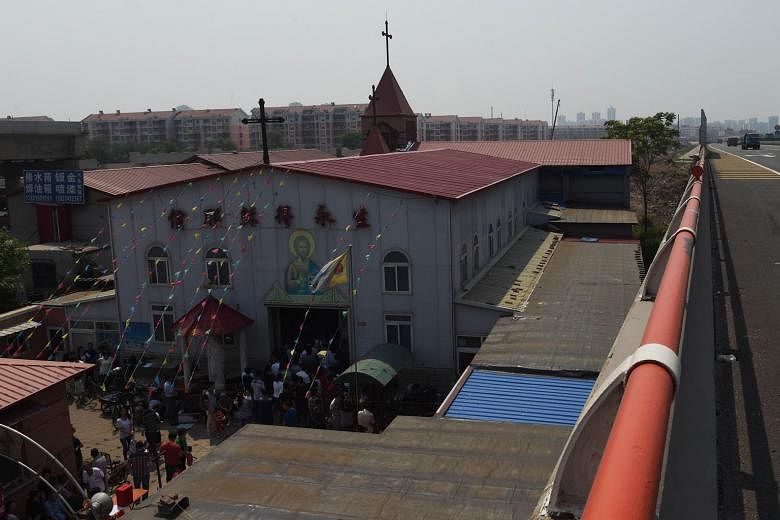TIANJIN • Chinese priest Lin Xiuqiang is pleased with his new Catholic church, its tall tower topped with a cross - and grateful to the local Communist officials who paid US$19 million (S$26 million) to build it.
China's Christians are divided between state-run churches, which pledge allegiance to the officially atheist Communist Party, and "underground" congregations who maintain their independence.
Dozens of church buildings have been demolished and crosses removed in recent months, in what has been seen as a tougher approach by the ruling party towards China's believers, estimated at around 70 million and growing.
But at the same time some local governments are allowing new spires to sprout and even showering funds on places of worship as they seek to woo the faithful to the official church.
Father Lin's immaculate red-brick Hedong Catholic Church in the port city of Tianjin was finished last month."We are happy. The church gives us a new place to practise our faith," he said.
But the Hedong church is aligned with the state-run Chinese Patriotic Catholic Association, and the local Vatican-approved bishop Melchior Shi Hongzhen is barred from the premises.
The 88-year-old lives in the small, metal-walled Zhongxin Bridge Catholic Church and local Catholics said that the authorities restrict his movements.
The unheated facility, in the shadow of a busy motorway, is surrounded by damp ditches filled with construction waste. At its entrance, a statue of Jesus and Mary and a metal cross are both stained with rust.
"You can see how bad our environment is," said one male member of the congregation, who asked not to be named.
Mr Yang Fenggang, an expert on Chinese religion at Purdue University in the United States, said conditions for underground churches have worsened in recent years.
"The government tries to increase the competitiveness of the officially approved churches in opposition to the underground churches," he added.
Local officials may be more likely to fund churches where underground communities are strong, said church-state relations expert Liu Peng from a government think-tank.
The authorities in Beijing's wealthy Haidian district, a hot spot for unofficial churches, covered most of the cost of the modernist Haidian Church, which was designed by German architects and completed in 2007.
Members of unofficial churches said they have no hope of getting their own buildings approved but still shun state-backed facilities, instead holding services in makeshift spaces as mundane as an apartment above a dental surgery.
The unofficial New Tree church convenes in a dingy office building opposite a travel agency. When asked about the gleaming state-run church nearby, a member surnamed Yang said contemptuously: "Nice building, poor in spirit."
AGENCE FRANCE-PRESSE

